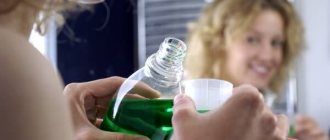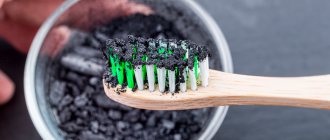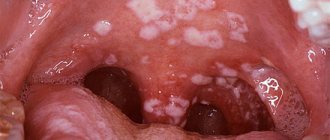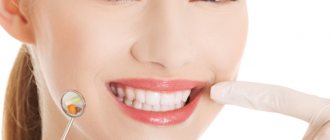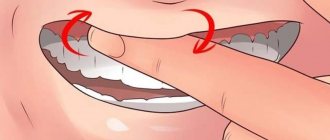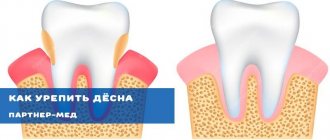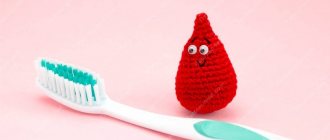Many centuries ago, our ancestors understood a simple truth - nature itself takes best care of human health. After all, for any disease there is sure to be a medicinal plant that will help improve the condition. Thanks to the experience of traditional healers, today we know many effective and safe recipes for all occasions. And the benefits from these natural remedies are often much greater than from expensive medications.
For example, oak bark, which has many beneficial qualities, is widely used in folk medicine. Based on this component, various recipes have been compiled that help stop uterine bleeding, cope with excessive sweating, and prevent bedsores. Oak bark is very useful in treating teeth and oral cavity. It is recommended for gingivitis, stomatitis, gumboil, and bad breath.
About the benefits of oak bark
It is difficult to list all the beneficial properties of oak bark. It contains various acids, proteins, pectin, resins that have an astringent effect, and tannins.
A natural antiseptic, oak bark is often used in medicine, including dentistry.
Thanks to this combination of natural components, the bark can be used for many diseases. It has anthelmintic and antibacterial properties, is a natural antiseptic, promotes wound healing, and accelerates the restoration of skin tissue.
One of the beneficial properties of oak bark is the ability to stimulate natural defenses and strengthen the immune system.
Medicinal properties
With its help, you can easily cope with various problems of the oral cavity; most often it is used to treat gums. An antiseptic based on it is capable of healing wounds, has an anthelmintic effect, and suppresses the growth and reproduction of pathogenic bacteria. Due to its rich composition (tannins, resins, acids, pectin and proteins), it helps restore the body's protective functions.
Treatment of gums using oak bark is due to its beneficial effects on the body, namely:
- Oak infusion has anti-inflammatory properties. Most problems in the oral cavity, in particular with the gums, are associated with inflammatory processes. This is why oak bark is used for gum inflammation - it relieves inflammation well.
- It has wound healing and hemostatic properties. The tannins included in the composition promote rapid blood clotting, which is important for open wounds. They also stimulate regenerative processes in the oral cavity, accelerating the healing process of wounds.
- Oak decoction has disinfecting properties. Due to its bactericidal, antiviral and antifungal effects, its benefits in solving some dental problems are invaluable. With constant use, harmful microorganisms die completely or reduce their activity.
- Oak bark has an analgesic effect on teeth. If your teeth or gums hurt, rinsing your mouth with a product based on it is an excellent solution. As a result of the procedure, the pain will subside and cease to bother you.
- Products based on it very quickly relieve swelling and allergic manifestations, which are frequent accompaniments of inflammation in the oral cavity.
Help with gum disease
Inflamed gums cause a lot of trouble. She turns red and then starts to hurt a lot. Under the influence of pathogenic organisms, pustules appear in the mouth. If measures are not taken in time, you can even lose a tooth (in case of periodontal disease). To strengthen the gums and relieve tooth inflammation, it is recommended to use a decoction prepared from oak bark. You should rinse your mouth with this product throughout the day.
Decoction for rinsing
The decoction is prepared according to the following recipe:
Take 2 cups of water for 2 teaspoons of oak bark. Pour water over the bark and bring to a boil over high heat. Then reduce the heat and simmer the mixture for 5 minutes. Then remove the product from the heat and allow it to cool. The cooled mixture is carefully filtered and poured into a jar. The healing decoction is ready, you can begin treatment.
The oral cavity should be rinsed frequently - up to 5 times a day. It is quite possible that the condition will improve on the first day. But this does not mean that treatment can be stopped. The full course must last at least 3 days.
If the inflammation is too severe, then the procedures are carried out for a whole week. It is better not to use yesterday's decoction, because its healing properties weaken over time. Rinsing will bring maximum benefit if you brew a new portion every day.
Pharmacy preparations for home treatment
Despite many years of experience in using traditional medicine to combat dental diseases and take preventive measures, many people do not trust such methods and prefer pharmaceutical drugs. Pharmacies offer a wide range of various medications that will help cope with various types of inflammatory processes and other problems.
Among them:
- antiseptic rinsing solutions;
- ointments;
- gels and creams;
- sprays;
- toothpastes.
However, without consulting your dentist, you should not resort to self-medication, which, if neglected, can lead to tooth loss. It is better to spend time and go to the dental office, where they will prescribe the correct treatment.
Ointments and gels
The table shows a list of the most common options for ointments against gum disease:
| Name of ointment or gel | Purpose | Features of application |
| Kamistad |
| Valid for 20 minutes. |
| Dental | Begins to act within a minute after application. The effect lasts 20 minutes. Apply with massaging movements 3-4 times a day. | |
| Solcoseryl |
| Relieves pain within 3-5 minutes. Valid for 4-5 hours. Apply 2-3 times a day. |
| Metrogil Denta |
| You need to apply it 2 times a day, after cleaning your mouth. |
| Holisal |
| Begins to act within a minute after application. The effect lasts 20 minutes. Used for a week 2-3 times a day. |
| Asepta |
| Contains propolis. Used for treatment and as prevention. |
Special toothpastes
Another effective way to combat inflammatory processes in the oral cavity and other dental problems are special toothpastes. They should completely or partially replace the regular paste for the period during which treatment is carried out.
They contain medicinal plants and components that have an anti-inflammatory effect. The maximum period of their use is usually about a month.
The leading positions among such pastes are occupied by:
- Parodontax. It is characterized by antibacterial and anti-inflammatory effects.
- Lakalut Active. Helps relieve swelling and stop bleeding.
- President Exclusive. Has a pronounced antiseptic effect. Prevents the appearance of caries.
- Silka. Provides plaque dissolution and prevents the development of gingivitis.
Flux treatment
The pain from dental problems can be so severe that it is simply impossible to bear. And if gumboil has formed near the tooth, then unbearable pain is complemented by an increase in body temperature and a sharp deterioration in general well-being.
A decoction of oak bark with sage will help reduce pain from flux
A simple folk recipe - oak bark with sage leaves - will help you alleviate the condition at home. A medicinal decoction is prepared in this way. Take 4 tablespoons of crushed bark and pour a liter of boiling water over it. Then the composition is kept in a steam bath for 20 minutes. About 5 minutes before the end of cooking, add a little sage (half a teaspoon) to the bark. After cooking, the composition should sit for half an hour. The finished broth must be cooled and rinsed with it in your mouth for several minutes every hour. As a result of such procedures, the flux subsides. Repeat rinsing until symptoms disappear completely.
Oak bark for stomatitis
Another common oral disease is stomatitis. Children are especially often affected by this disease. After all, they always put either a dirty toy or unwashed hands into their mouths. And even the most vigilant parents do not always manage to keep an eye on their baby. As a result, an infection develops in the oral cavity, incredibly painful purulent ulcers appear, and the temperature rises. Because of this, the child suffers greatly, and the parents cannot find relief from their worries. It's actually very easy to help your baby. You just need to prepare a decoction of medicinal plants. First, brew a couple of teaspoons of bark, and then add a spoonful of calendula or chamomile to the decoction. The composition is poured with boiling water (3 cups) and kept in a water bath for 5 minutes. The finished broth is allowed to cool and then filtered thoroughly. Now you can move on to the procedures.
When a child has stomatitis, each wound is treated with a decoction of oak bark
If your child is very small and cannot rinse his mouth, you should not refuse natural medicine. You can treat each wound separately with the decoction. If you are patient and do this regularly, after just a few procedures your baby will feel much better.
Oak bark is truly the most suitable way to help young children get rid of stomatitis. After all, there are no special means for them. All medications sold in pharmacies are intended for children over 7 years of age.
Treatment
The use of oak bark to treat diseases of the oral cavity and gums is simple. You will need an oak tree, it can be bought at a pharmacy chain and has a fairly low cost. You can prepare the bark yourself at the end of spring.
Instructions for use
General instructions for use are simple:
- Rinse your mouth as often as necessary to relieve discomfort. For pain - every two hours, for prevention - three times a day.
- The gums are rinsed with the prepared product at room temperature (22–25 degrees).
- Prepared decoctions or infusions can be stored in the refrigerator for up to two days. In the room - no more than 18 hours.
- Rinse for an average of 3 minutes. If the aftertaste of the bark is unpleasant, then 15 minutes after the procedure, rinse your mouth with plain water. The course of treatment is no more than 10 days.
Treatment of periodontal disease
Periodontal disease is the subsidence of the soft tissues of the gums. Typically, the gums recede so that the ends of the tooth canals become bare. This causes pain and also results in the loss of teeth.
Gargling with a decoction without additives strengthens the gums. Can be used to prevent periodontal disease.
The treatment period is 7 days, up to five rinses are done per day. If the disease is advanced, the period increases to 14 days.
Use for bleeding gums
The appearance of bleeding is associated with delicate and weak gum tissues or due to heavy plaque on the enamel. Sometimes it happens as a sign of other diseases not related to the oral cavity. In this case, rinsing with oak infusion is more like a preventive measure.
Usually a simple decoction is used or mixed with chamomile. Additionally, it prevents infections from entering the blood. To relieve bleeding gums, use tooth powder with oak bark instead of rinsing.
Treatment of stomatitis
Stomatitis occurs due to a dirty object getting into the mouth, so children are more likely to get sick. The child’s wounds are treated with a cotton swab soaked in the broth. To treat stomatitis, a decoction of the bark with chamomile, calendula marigold or sage is used. In a concentration of 2:1. The dry crushed part is poured with boiling water and infused in a water bath for five minutes. Then cool and use as intended.
Treatment of gumboil and toothache
It is not always possible to get to a doctor on time, so if there is an urgent need, oak bark is brewed with sage to relieve inflammation of the periosteum and completely disappear the flux.
To relieve toothache, rinse your mouth with a simple decoction every 90-120 minutes.
There is a more complex recipe for teeth. You will need:
- 1 liter of water;
- 100 grams of bark;
- a third of a glass of 3% vinegar;
- 5 grams of red pepper.
Pour water over the main ingredient and boil for about 20 minutes. Add other ingredients to the purified solution. The mixture is stored in a cool place for a week.
Decoction for rinsing after tooth extraction
It is important that after tooth extraction, the wound heals quickly, without inflammation and without infection. Therefore, for additional disinfection, surgeons ask to rinse the gums with an oak decoction mixed with soda or chamomile decoction. You need to rinse after eating, every 180 minutes.
Toothpaste with oak bark
Crushed oak bark is mixed into toothpaste. The main purpose is to treat gingivitis, periodontitis or to strengthen teeth and gums. Instead of paste, tooth powder is made with oak bark and other medicinal plants. They need to be crushed, mixed and sieved to remove large particles. Clean carefully so as not to damage the gums and enamel.
Diseases that can be treated with oak bark
The bark has a good effect not only in the treatment of dental diseases. Traditional healers recommend its use for other health problems. Thus, a decoction of the bark can successfully treat uterine bleeding, erosion and other female diseases. To do this, prepare a medicinal decoction in special proportions and perform douching. When bleeding occurs, the decoction is taken orally.
Many people are plagued by an annoying nuisance - excessive sweating of the feet. Oak bark will help in this case too. Regular baths with its decoction will quickly correct the situation.
The bark is also successfully used for hair care. If your curls have become brittle and lifeless, after each wash you need to rinse them with a healing decoction. The bark will make your hair strong, healthy and shiny. They will stop falling out and gain volume. If you are blonde, then oak bark will give your hair an expressive shade.
Self-harvesting bark
Today you can purchase oak bark very easily. It is inexpensive, available in all pharmacies, and is sold without a prescription or other restrictions. But if you decide to prepare medicinal raw materials yourself, it is better to do it in early spring. At the same time, remember an important rule - young bark is needed for medicinal purposes. The fact is that trees that have not yet reached twenty years of age accumulate the most useful substances.
The collected bark should be placed on a sheet of plywood or fabric made from natural materials and left to dry. For drying, you need to choose a suitable place with good air circulation, for example, in the attic or under a shed. Remember to stir the bark every day. When the raw material becomes almost dry, it needs to be kept in the oven.
Dried raw materials can be used in various recipes. Infusions and decoctions are prepared from it, used alone or mixed with other medicinal plants.
Safety regulations
Oak bark is a natural remedy that acts gently without causing harm to health. But some people need to use it with caution. First of all, we are talking about pregnant women and small children.
To avoid unpleasant side effects, you need to consider the following points:
- With long courses of rinsing (more than two weeks), nausea may occur. So take breaks
- If you have an individual intolerance to the substances contained in the bark, you will have to avoid this remedy.
- If you have constipation, you should not take the decoction orally.
Before starting dental treatment, it is advisable to consult a dentist. The specialist will examine the condition of the oral cavity and give his recommendations on the use of folk remedies. He will tell you how to properly prepare decoctions and what other components should be added to them.
Rinsing your teeth with a decoction of oak bark is useful as a preventive measure.
Oak bark for toothache gives quick and lasting results. At the same time, it does not damage the enamel, improves the condition of the gums, relieves bleeding and even has a slight whitening effect. Do not neglect this remedy, even if your teeth are in good condition. Use a decoction of the bark for preventative purposes, and your smile will always remain beautiful!
Main causes of loosening
Even if all hygiene rules are followed, teeth can still begin to become loose. This can be influenced by various factors, including:
- the presence of pathologies of the oral cavity, for example, gingivitis, periodontitis and other ailments;
- chronic diseases (psoriasis, arthritis, diabetes, etc.);
- dental caries or tartar;
- bruxism (teeth grinding) or mechanical damage to the teeth;
- neglect of personal hygiene rules;
- weak immune system;
- avitaminosis;
- hereditary factor;
- malocclusion;
- use of certain medications;
- during pregnancy or breastfeeding, as well as during puberty, when hormonal imbalance occurs in the female body.
Causes of loose teeth
It is advisable to take a closer look at some of the reasons. We are talking about pathologies of the oral cavity.
- Malocclusion occurs as a result of improper alignment of teeth. This anomaly is accompanied by an uneven load on the dentition. As a rule, pathological bite most often occurs on the front teeth.
- Periodontal disease. A chronic disease of the human oral cavity, which is accompanied by the appearance of an inflammatory process and bleeding gums. Incorrect treatment or its complete absence leads to gradual destruction of the bone structure. This is the main factor in the occurrence of loose teeth.
- Periodontitis is an inflammation of the patient’s gums, as a result of which the teeth begin to become loose.
- Gingivitis occurs as a result of the development of microorganisms in the oral cavity. As a rule, this occurs due to non-compliance with personal hygiene rules. The disease is accompanied by bleeding and swollen gums, but if treated incorrectly or untimely, more serious symptoms can occur.
Gingivitis


